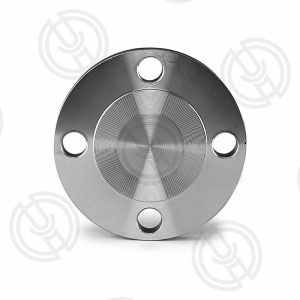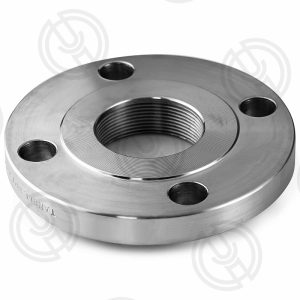ASTM A182 F53 flanges are renowned for their exceptional corrosion resistance and mechanical properties, making them suitable for a wide range of industrial applications. However, one of the lesser-discussed aspects of these flanges is their performance in low-temperature environments. This article explores the low-temperature impact resistance of ASTM A182 F53 flanges at -46°C, highlighting the importance of this characteristic and its implications for various industries.

Introduction to ASTM A182 F53 Flanges
ASTM A182 F53 flanges are made from a high-performance duplex stainless steel alloy, which offers a unique combination of strength, toughness, and corrosion resistance. These flanges are widely used in the petrochemical, chemical, and marine industries, where they are exposed to harsh environmental conditions, including low temperatures. The ability of F53 flanges to maintain their mechanical properties at sub-zero temperatures is crucial for ensuring the reliability and safety of industrial processes.
Low-Temperature Impact Resistance at -46°C
The low-temperature impact resistance of a material is a measure of its ability to absorb energy during an impact event without fracturing. For ASTM A182 F53 flanges, the requirement to perform at -46°C is essential, especially in regions with cold climates or applications involving cryogenic fluids. Here’s why low-temperature impact resistance is critical:
Material Integrity: At low temperatures, materials tend to become more brittle, which can lead to fractures under stress. F53 flanges must maintain their toughness to prevent catastrophic failures in critical applications.
1. Safety: The impact resistance ensures that the flanges can withstand accidental impacts or sudden pressure changes without compromising the integrity of the system.
2.Reliability: For processes that operate continuously in low-temperature environments, the reliability of F53 flanges is paramount to avoid shutdowns and maintenance issues.
Testing Low-Temperature Impact Resistance
To ensure that ASTM A182 F53 flanges meet the required impact resistance at -46°C, standardized testing procedures are employed. The Charpy V-notch test is commonly used to measure the material’s toughness. During the test, a notched specimen is struck with a pendulum, and the energy absorbed by the material is recorded. The results are used to determine the material’s ability to withstand low-temperature impacts.

Performance of ASTM A182 F53 at -46°C
ASTM A182 F53 flanges have been found to exhibit excellent low-temperature impact resistance at -46°C, thanks to their duplex stainless steel composition. The following factors contribute to their performance:
1.Microstructure: The duplex microstructure, with its balanced mix of ferrite and austenite phases, provides a good balance of strength and toughness, even at low temperatures.
2. Alloying Elements: The presence of chromium, nickel, molybdenum, and nitrogen in the alloy helps to maintain the material’s toughness and resistance to embrittlement.
Applications Benefiting from Low-Temperature Impact Resistance
1.Several industries and applications benefit from the low-temperature impact resistance of ASTM A182 F53 flanges:
2.Offshore Platforms: In Arctic and subarctic regions, offshore platforms require materials that can withstand the extreme cold without losing their mechanical properties.
LNG Plants: Liquified Natural Gas (LNG) facilities operate at cryogenic temperatures, and F53 flanges are used in critical components to ensure safety and reliability.
Pipeline Systems: Pipelines transporting fluids in cold climates must be equipped with flanges that can handle low temperatures and potential impact events.

Conclusion
ASTM A182 F53 flanges demonstrate remarkable low-temperature impact resistance at -46°C, making them a reliable choice for demanding industrial applications. The material’s ability to maintain its mechanical properties in sub-zero environments is essential for ensuring the safety, reliability, and efficiency of operations in the petrochemical, chemical, and marine industries.
By understanding the importance of low-temperature impact resistance and the benefits offered by F53 flanges, engineers and decision-makers can make informed choices when selecting materials for challenging environments. Proper material selection and adherence to testing standards are key to leveraging the full potential of ASTM A182 F53 flanges in low-temperature applications.
